Disclosure: This article contains affiliate links. We may earn a commission from purchases at no extra cost to you, which helps our travel content.
When I first landed in Singapore five years ago with nothing but a backpack and a modest budget from my tech exit, I expected the gleaming skyscrapers and luxury malls to drain my wallet faster than I could say 'Merlion.' What I discovered instead was a parallel universe of affordable culinary brilliance hidden in plain sight: Singapore's legendary hawker centers. These open-air food courts aren't just places to eat—they're living museums of Southeast Asian culinary heritage, where $3-5 can buy you a meal that rivals five-star restaurants. After countless return visits and gaining the trust of local vendors who now greet me by name, I've compiled this insider's guide to experiencing Singapore's hawker culture like a true local, not a tourist ticking boxes. Forget the sanitized recommendations in glossy travel guides—I'm taking you to where real Singaporeans queue for their favorite dishes.
Beyond the Tourist Trail: Lesser-Known Hawker Centers
While tourists flock to the internationally renowned Maxwell Food Centre and Lau Pa Sat, savvy locals and budget travelers know that some of Singapore's best hawker experiences lie in neighborhoods rarely mentioned in guidebooks.
One of my personal favorites is Amoy Street Food Centre, tucked between office buildings in the CBD. The second floor houses A Noodle Story, where modern Singapore noodles with Japanese-inspired toppings regularly generate 30-minute queues. I've found that arriving at 11:15am—15 minutes before opening—secures you a spot near the front of the line.
Venture further from the center to Whampoa Food Centre where the famous Balestier Road Hoover Rojak serves a fruit and vegetable salad tossed in prawn paste and sprinkled with crushed peanuts that will redefine your understanding of 'salad.' The elderly couple running the stall has been perfecting their recipe for over 40 years.
Tekka Centre in Little India offers an entirely different experience with its vibrant atmosphere and Indian-Muslim specialties. The biryani at Yakader stall has sustained me through many budget-conscious days, with generous portions for just S$5.
Perhaps the most local experience can be found at Old Airport Road Food Centre. Despite its name, it's nowhere near the current airport, but houses over 150 stalls including the legendary Lao Fu Zi char kway teow. The wide corridors here make it easier to navigate than most hawker centers, perfect for first-timers intimidated by the usual hustle.
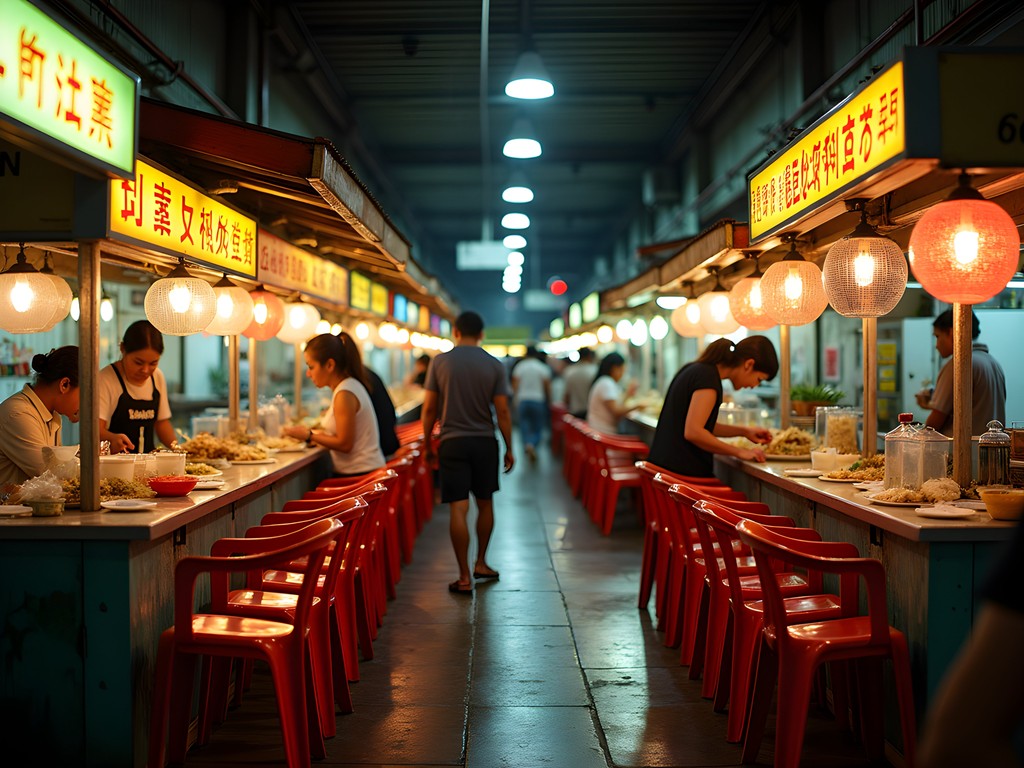
💡 Pro Tips
- Visit hawker centers during off-peak hours (2-5pm) to avoid crowds and get more attention from vendors
- Look for stalls with queues of locals (not tourists) – they know where the good food is
- Many hawker stalls close once they sell out, so popular spots are often best visited before 1pm
Navigating the Hawker Experience: Etiquette and Insider Hacks
Your first hawker center experience can be overwhelming—a sensory explosion of aromas, sizzling woks, and rapid-fire Singlish. Here's how to navigate like you've been doing this for years.
First, the sacred tissue packet ritual: Singaporeans 'chope' (reserve) tables by placing tissue packets on them. Respect this system—a table with packets is taken, even if empty. I learned this the hard way when an elderly man gave me a stern lecture after I innocently removed a packet from 'his' table!
Before heading out, I always carry my hawker center essentials in a lightweight sling bag that holds tissues (for choping and wiping), hand sanitizer, and cash (many stalls still don't accept cards).
When ordering, use the stall's number and item name—'One plate chicken rice from stall 42' is clearer than pointing and nodding. Most vendors speak English, but appreciate customers who attempt basic Singlish phrases like 'Can add more chili?' or 'Dabao?' (takeaway).
For solo travelers, the communal seating culture is actually perfect. I've had fascinating conversations with everyone from taxi drivers to bank executives over shared tables. If you're alone and see a partially occupied table, a polite 'Excuse me, can I sit here?' is perfectly acceptable.
Many hawker centers have specialized drink stalls selling everything from fresh sugar cane juice to traditional kopi (coffee). My go-to refresher is 'lime juice sour plum'—a perfect antidote to Singapore's humidity and spicy food. For the adventurous, try 'Michael Jackson'—a layered drink of soy milk and grass jelly that's sweet, creamy, and nothing to do with the singer!
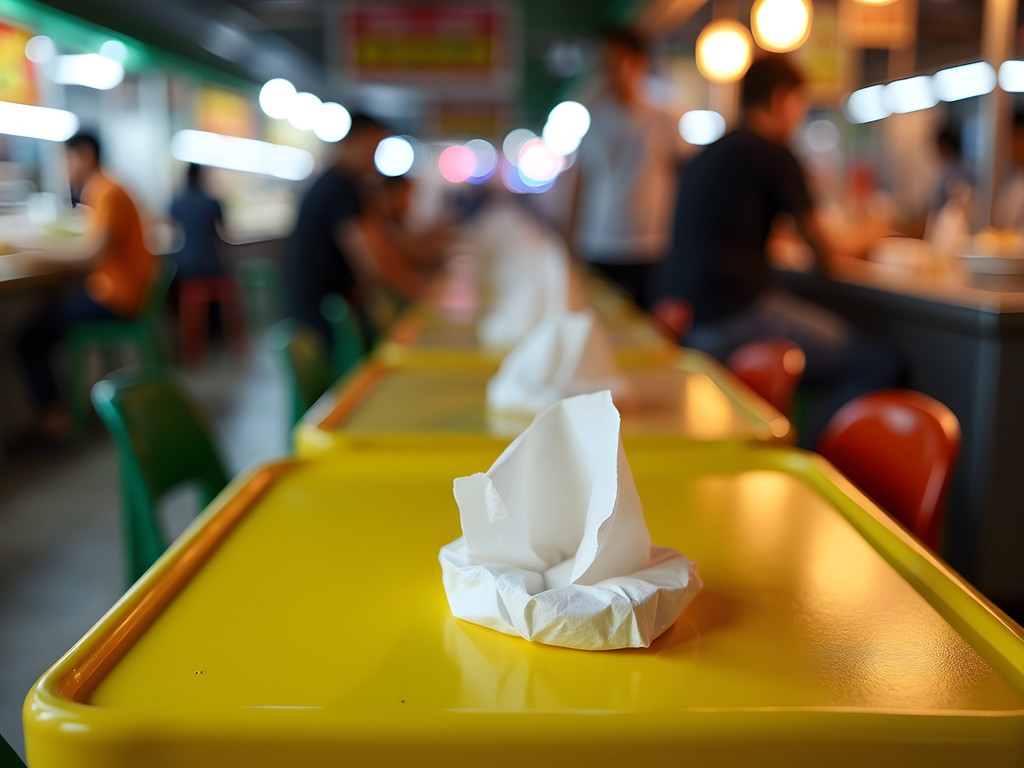
💡 Pro Tips
- Always carry tissues for both table reservation and as napkins
- Most stalls are cash-only, so keep small bills handy
- Learn basic food terms like 'mala' (numbing spice), 'shiok' (delicious/satisfying), and 'dabao' (takeaway)
Must-Try Dishes Beyond Chicken Rice
Singapore's national dish of Hainanese chicken rice deserves its fame, but limiting yourself to this tourist favorite means missing out on the true diversity of hawker cuisine.
My personal obsession is Char Kway Teow—flat rice noodles wok-fried with dark soy sauce, bean sprouts, egg, Chinese sausage, and cockles. The best versions have 'wok hei' (breath of the wok), that smoky flavor that comes only from cooking over intense heat. Hill Street Char Kway Teow at Bedok South Market makes my favorite version, with perfectly charred edges on the noodles.
Bak Chor Mee (minced meat noodles) is another local favorite that tourists often overlook. Tai Hwa Pork Noodle at Crawford Lane earned a Michelin star for their version—tangy, spicy noodles topped with minced pork, liver, and dumplings. Yes, you'll queue for 45 minutes, but the $6 bowl is worth every minute spent in line.
For breakfast, nothing beats Kaya Toast with soft-boiled eggs and kopi (coffee). The traditional breakfast set at Heap Seng Leong kopitiam includes bread toasted over charcoal and spread with coconut jam, served alongside eggs so soft you drink them with a dash of soy sauce and white pepper. The elderly owner still makes coffee the traditional way—with a sock filter and a generous pour of condensed milk.
Vegetarians shouldn't feel left out. Thunder Tea Rice at Living Wholesome Vegetarian in Chinatown Complex offers a unique Hakka dish where you pour an herb-infused green tea over a bowl of rice topped with chopped vegetables, tofu, and nuts. It's healthy, delicious, and completely meat-free.
After all that savory food, cool down with Chendol—shaved ice topped with green rice flour jelly, red beans, and coconut milk. The Malaysian-style version at Four Seasons Chendol in Toa Payoh adds a gula melaka (palm sugar) syrup that's absolutely divine on a hot afternoon.
I always track my hawker adventures with the food journal where I note stall names, dishes, and flavor notes—it's become my personal Singapore food bible over the years.


💡 Pro Tips
- Order dishes from stalls specializing in just one or two items – they've perfected their craft
- Ask for less oil/sugar/salt if you prefer; most vendors are happy to adjust to taste
- Try one new dish each visit to expand your hawker repertoire beyond the famous classics
Sustainable Hawker Culture: Embracing Local Food Practices
As someone passionate about sustainable travel, I've come to appreciate how Singapore's hawker culture embodies environmentally conscious food practices that predate our modern eco-movement.
Many hawker centers now participate in food waste recycling programs, and the government has implemented tray return systems to reduce cleaning resources. I always carry my own reusable cutlery set to avoid disposable utensils, which earns appreciative nods from older vendors who remember when bringing your own containers was standard practice.
The farm-to-table concept that's trendy in Western restaurants? Hawker centers have been doing this for generations. Visit Tekka Market early morning and you'll see vendors selecting produce directly from local farmers for that day's cooking. At Keng Eng Kee Seafood in Alexandra Village Food Centre, the fish and shellfish arrive fresh each morning from Jurong Fishery Port.
Hawker centers also represent incredible food security and accessibility. Where else can you get a nutritionally complete meal for under $5? This affordability doesn't come at the cost of quality either—many hawkers use premium ingredients but keep prices low through specialized menus, high volume, and decades of experience.
Perhaps most impressive is the generational knowledge preserved in these food stalls. Many recipes have been refined over 40-50 years and passed down through families. When I chatted with the owner of Tian Tian Hainanese Chicken Rice at Maxwell Food Centre, he explained how his grandmother taught him to poach the chicken at precisely 80°C—never boiling—to achieve the perfect silky texture.
By patronizing these traditional hawkers, you're not just enjoying affordable meals but actively preserving culinary heritage that might otherwise disappear as younger Singaporeans pursue other careers. The government has recognized this by creating apprenticeship programs and subsidizing hawker stall rentals for new entrants willing to learn traditional recipes.
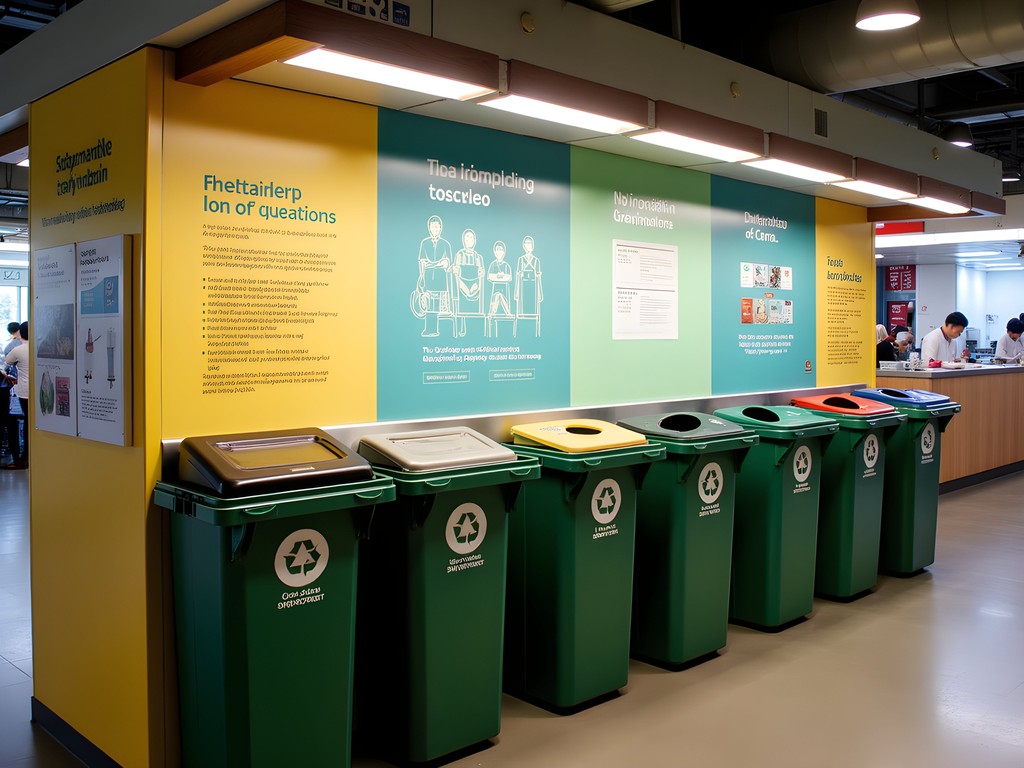
💡 Pro Tips
- Bring your own reusable container for takeaway to reduce waste
- Look for hawker centers with tray return systems and recycling stations
- Support multi-generational stalls to help preserve traditional recipes and techniques
Hawker Center Hopping: Creating Your Own Food Trail
After dozens of trips to Singapore, I've perfected the art of the hawker center food trail—a self-guided tour hitting multiple locations in one day to sample the best dishes without overwhelming your stomach or wallet.
Start your morning at Tiong Bahru Market around 8am. The second floor houses one of Singapore's most beloved breakfast spots—Tiong Bahru Pau—where steamed buns filled with char siu (barbecue pork) pair perfectly with a traditional kopi. While there, grab chwee kueh (steamed rice cakes topped with preserved radish) from Jian Bo Shui Kueh for a savory contrast.
By mid-morning, take a short bus ride to Chinatown Complex where Hong Kong Soya Sauce Chicken Rice and Noodle—the world's cheapest Michelin-starred meal—serves their famous soya sauce chicken for just S$4. The complex houses over 260 stalls, so pace yourself!
For lunch, head to Tekka Centre in Little India where the biryani at Yakader stall has sustained me through many budget-conscious days. The vibrant atmosphere and Indian-Muslim specialties offer a completely different hawker experience.
In the afternoon, make your way to Berseh Food Centre for a traditional dessert of chendol or ice kachang to cool down in the Singapore heat. This smaller hawker center is rarely on tourist itineraries but beloved by locals.
End your day at East Coast Lagoon Food Village, one of the few hawker centers with a beachfront view. Order satay from Haron Satay and BBQ seafood from Cheok Kee, then enjoy your dinner watching the sunset over the ocean.
To track this adventure efficiently, I use the travel planner to map out hawker centers by neighborhood and note specific stalls. Between centers, I recommend using Singapore's excellent MRT system or budget-friendly Grab rides rather than taxis.
Remember that hawker hopping isn't about quantity but quality—sample small portions from the best stalls rather than filling up at one location. Most dishes cost S$3-6, meaning you can try 8-10 specialties across different centers for under S$50 total—less than one meal at a mid-range restaurant.

💡 Pro Tips
- Plan your hawker trail by neighborhood to minimize travel time
- Share dishes with companions to sample more varieties
- Take breaks between centers to walk off meals and explore surrounding neighborhoods
Final Thoughts
Singapore's hawker centers represent more than just affordable dining—they're living cultural institutions where recipes passed down through generations continue to thrive despite rapid modernization. What makes these spaces truly special isn't just the incredible food but the democratic nature of the experience: CEOs and construction workers sit side by side, united by their appreciation for authentic flavors. As travelers seeking meaningful connections, hawker centers offer us a rare window into Singapore's soul that no high-end restaurant or tourist attraction can match. So on your next visit, skip that overpriced hotel breakfast and venture into the heartland hawker centers where $5 will buy you not just a meal, but a genuine cultural experience. And remember—the longer the queue, the better the food. Some things are worth waiting for.
✨ Key Takeaways
- Singapore's best food experiences are often found in neighborhood hawker centers away from tourist areas
- Understanding local etiquette like 'choping' with tissue packets enhances your hawker center experience
- For around $3-6 per dish, you can sample world-class cuisine that represents Singapore's diverse cultural heritage
- Supporting traditional hawkers helps preserve culinary techniques and recipes that might otherwise be lost
📋 Practical Information
Best Time to Visit
year-round (indoor facilities operate regardless of weather)
Budget Estimate
$3-6 per dish, $10-20 total per meal
Recommended Duration
weekend (2-3 days)
Difficulty Level
Beginner

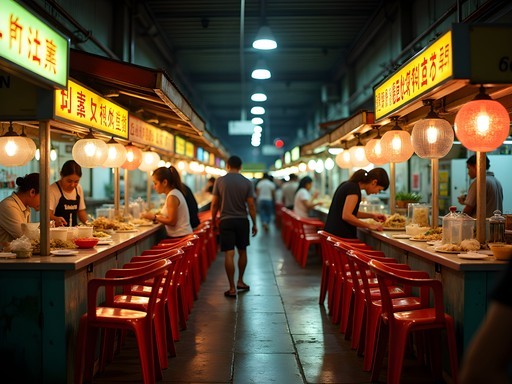

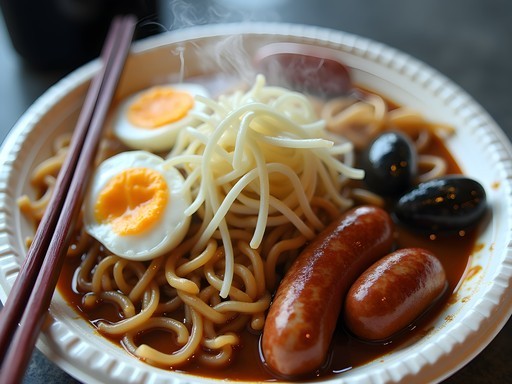
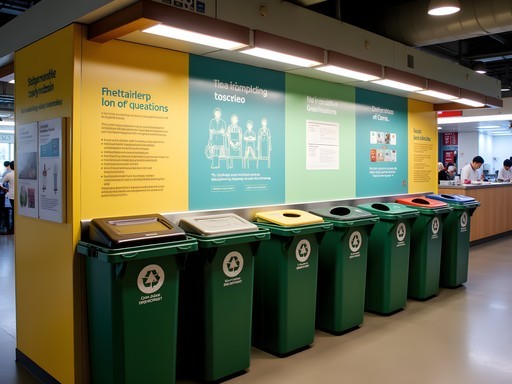
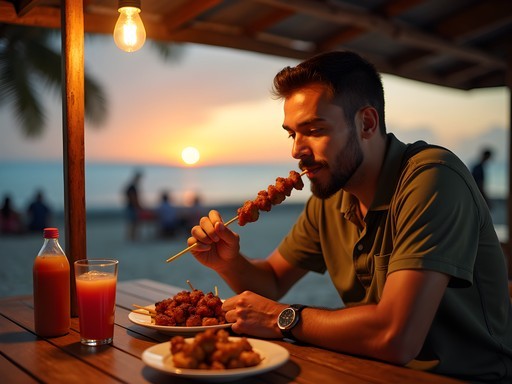


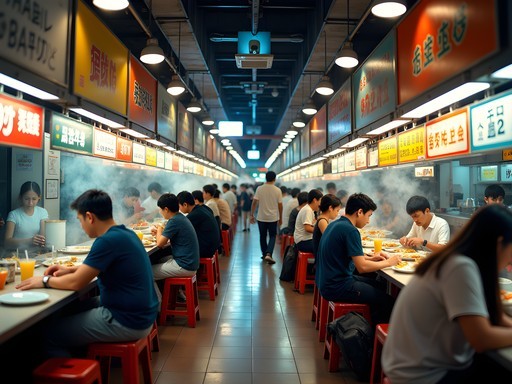







Comments
starlife
Your post couldn't have come at a better time! Bookmarked for my trip next month. Those carrot cake photos have me drooling!
coffeeblogger
Great post! I'm heading to Singapore next month for just 3 days. If you had to pick just ONE hawker center for a first-timer that's not on the typical tourist path, which would it be? Also, is it true you need to reserve a table with tissue packets? 😅
starlife
Not Peter, but YES to the tissue packet thing! It's called 'chope-ing' and it's totally a thing. I learned this the hard way when I almost took someone's 'reserved' seat!
Douglas Bradley
For a 3-day trip, I'd recommend Old Airport Road Food Centre. Less touristy than Maxwell or Lau Pa Sat, amazing variety, and it's where locals actually eat regularly. Try the Hokkien Mee at Dong Ji - worth the queue! I always keep my pocket guide handy for navigating these places.
Douglas Bradley
Peter, your analysis of the hawker center ecosystem is spot on. I've been documenting food cultures across Asia for my blog, and Singapore's approach to preserving these traditions while adapting to modern constraints is fascinating. I'd add Tekka Centre in Little India to your list - the diversity of regional Indian cuisines there offers another dimension to Singapore's food story. The murtabak at stall #01-259 is particularly noteworthy. One observation: I've noticed hawker centers are increasingly becoming sites of cultural preservation as younger Singaporeans recognize their importance. Did you encounter many young hawkers during your explorations? This generational transition seems critical to maintaining these traditions.
coffeeblogger
Douglas - I was at Tekka Centre last month! That murtabak recommendation is legit. Also tried the most amazing teh tarik there.
freenomad
This post brought back so many memories! I stumbled upon Tiong Bahru Market last year and it was definitely the highlight of my Singapore trip. The lao hong soy sauce chicken was life-changing. One tip for anyone heading there - go early morning (like 7am) to see the wet market in full swing before heading upstairs for breakfast. The atmosphere is completely different than evening visits!
starlife
Is Tiong Bahru easy to get to? Planning my first SG trip for October!
freenomad
Super easy! Just take the MRT to Tiong Bahru station and it's about a 7-min walk. The public transportation in Singapore is amazing.
starmaster
Going to Singapore next month for the first time! Is it easy to find vegetarian options at these hawker centers? Any specific stalls you'd recommend?
wildlover
Not the author but I found lots of Indian stalls with amazing vegetarian options, especially at Tekka Centre. The dosa there was incredible!
Casey Andersson
Seconding Tekka Centre! Also check out Chinatown Complex - there's a Buddhist vegetarian stall there with mock meat dishes that are fantastic. Look for the thunder tea rice too!
starmaster
Thanks so much to both of you! This is super helpful. Can't wait to try these places!
Casey Andersson
Peter, this guide is absolute gold! I've been to Singapore three times and somehow never ventured to Chinatown Complex Food Centre until my last trip. What a revelation! The Michelin-starred soya sauce chicken rice for under $5 was mind-blowing. One tip for anyone heading there: bring a packet of tissues to 'chope' (reserve) your seat while ordering - learned that the hard way! Also, I found the Lonely Planet Singapore Pocket Guide had some excellent hawker center maps that helped me navigate the less touristy spots.
starmaster
What's this 'chope' thing with tissues? Never heard of that before!
Casey Andersson
It's a uniquely Singaporean thing! You place a packet of tissues on an empty seat/table to reserve it while you're off ordering food. Everyone respects it - it's like an unwritten rule.
starmaster
That's so interesting! Will definitely remember this for my trip next year.
wildlover
Just got back from Singapore and the hawker centers were the highlight of my trip! Old Airport Road was my absolute favorite - the satay there is insane. Wish I'd read this before going though... I totally missed out on Tekka Centre. Adding it to my list for next time!
Casey Andersson
Old Airport Road is legendary! Did you try the char kway teow there? I literally dream about it sometimes.
wildlover
Yes! That was actually the first thing I ate there. The wok hei flavor was incredible. Also had some killer oyster omelette.
adventurebackpacker
Love this post! Is it possible to eat vegetarian at hawker centers? I'm worried about finding options.
Peter Stevens
Absolutely! Look for Indian stalls that offer vegetarian options like dhal, vegetable curries, and roti prata. There are also Chinese vegetarian stalls (often marked with a yellow sign) that make amazing mock meat dishes. Chinatown Complex has several good vegetarian options. The key phrase to learn is 'chay' which means vegetarian!
Hunter Thompson
YESSSS! Finally someone talking about the REAL Singapore food scene! I've been banging on about hawker centers for years on my channel. They're absolute magic! Peter, mate, your section on the lesser-known centers is gold! I'd add Berseh Food Centre to that list - it's tiny but the wonton mee there is INSANE. And the laksa at 328 Katong Laksa (not a hawker center but still legendary) literally changed how I think about food. For anyone heading to Singapore, don't waste your money on fancy restaurants. S$4-5 will get you one of the best meals of your life at these hawker centers. The Michelin-starred chicken rice at Hawker Chan is overrated now IMO, but Maxwell Food Centre has some absolute bangers. Also, pro tip: bring a small packet of tissues everywhere. Not just for the chope culture Peter mentioned, but because many stalls don't provide napkins! I learned that one the hard way after demolishing some seriously messy chili crab! 😂
nomadpro
What's the best time to visit hawker centers? Are they super crowded during lunch?
photozone
In my experience, lunch (12-2pm) is absolutely packed with office workers. Early breakfast (7-8am) or late afternoon (3-5pm) is much more relaxed. Dinner gets busy again but not as bad as lunch!
Venture X
Premium card with 2X miles, $300 travel credit, Priority Pass